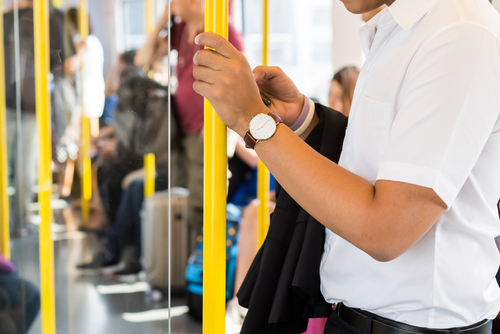
Reading Time: 10 minutes
Transportation for College Students is a real challenge on a tight budget. It is worse when you don’t have access to a car. Fortunately, there are several modes of transportation for college students available to college students.
They range from public transportation to ride-sharing to electric bikes. As well as that, we explore different ways to get around. Now, you can find the perfect fit for your needs and budget. You may even have some fun along the way!
In this post, we’ll explore some of the best transportation ideas for college students. Adding to this you can find tips and resources to help you make the most of your transportation services for college students.
Transportation for College Students That Won’t Make You Look Like a Clown! | Leave the Unicycle at Home

Are you a college student struggling to figure out the best transportation for college students? You’re not alone. Many college students face the challenge of finding affordable and convenient transportation options that fit their busy schedules.
Fear not! There are plenty of options available that can help you get where you need to go. Clearly, we do not want to break the bank. In this post, we’ll explore different transportation options that are ideal for college students. Let’s take a tour from electric transportation to public transportation, and don’t forget ride-sharing services.
We think outside the box and explore different modes of transportation. Let’s help you find the perfect fit for your needs and lifestyle.
Now, are you ready to dive in and explore the different transportation options available to college students?
Public Transportation For College Students
Are you a college student looking for an affordable and eco-friendly way to get around town? Public transportation for college students might be the perfect fit for you. It is not only cost-effective, it is environmentally friendly and convenient.
In this section, we’ll explore the benefits of using free public transportation for college students. We look at the different types of public transportation available in college towns. Thereafter, we provide tips for using public transportation effectively.
Benefits of Public Transportation

Cost saving is one of the biggest benefits of using this option as cheap transportation for college students. Owning a car, or using ride-sharing services is expensive. This is true for college students who are often on a tight budget.
Public transportation, on the other hand, is typically much more affordable. Specifically, in areas where free public transportation for college students is available. In addition to the cost savings, public transportation is also environmentally friendly. Importantly, as it helps reduce the number of cars on the road and decreases carbon emissions.
Types of Public Transportation
There are many types of public transportation available in college towns. These include buses, subways, and trains. Some college towns also offer trolleys or shuttles that run through campus and surrounding areas.
Depending on the location, public transportation options may vary. For example, some cities and college towns may offer a free bus or train system for college students. On the other hand, others may require the purchase of a monthly pass or individual tickets.
Tips for Using Public Transportation
If you’re new to using public transportation, there are a few tips to keep in mind that can help make the experience smoother and more enjoyable. Consider purchasing a monthly pass. This can save you money in the long run compared to purchasing individual tickets.
Make sure to also download a transportation app, such as Transit or Citymapper, to help you track schedules and routes. Finally, don’t be afraid to ask for help if you’re unsure about something! Many bus and train operators are happy to provide assistance.
Comparing Public Transportation Costs
To give you an idea of the cost savings of public transportation compared to other transportation options, we’ve put together a table below.
As you can see, public transportation is often significantly cheaper than owning a car or using ride-sharing services.
| Transportation Option | Average Monthly Cost |
| Public Transportation | $50 |
| Bike/ Walk | $0 |
| Ride-Sharing (Uber/ Lyft) | $150 |
| Car Ownership (including gas) | $500+ |
Consider public transportation for Ontario college students, or any other urban environment for that matter. Not only can you save money, you also reduce your carbon footprint. So why not give it a try? Next up, we’ll explore another transportation option that’s perfect for college students on a budget: biking and walking.
In the meantime, if you’re a parent looking for a reliable way to transport your student’s car to and from college, look no further than Nationwide Auto Transportation. Our team of experienced auto consultants can help you find the best solution for your specific needs.
To learn more about our college auto shipping services, please visit our Contact Us page. We’re here to help make the college transportation process as stress-free as possible.
Ride-Sharing | Is it the Best Short Range Transportation For College Students?

Looking for a convenient and cost-effective way to get around town? Ride-sharing might be the perfect transportation option for you. Ride-sharing services like Uber and Lyft are popular among college students for their affordability and convenience.
In this section, we’ll explore the benefits of using ride-sharing. We delve into the different ride-sharing services available in college towns. Last but not least, we give you tips for using ride-sharing services safely.
Benefits of Ride-Sharing
Ride-sharing can be a great option for college students looking to save money on transportation costs. It’s often cheaper than owning a car. Further, there are usually no additional costs like insurance or parking fees. Plus, ride-sharing can be more convenient than using public transportation. You can schedule a ride exactly when you need it and be picked up and dropped off at specific locations.
Ride-Sharing Services
There are several ride-sharing services available in college towns. They include Uber, Lyft, and local ride-sharing services. These services typically charge a base fare plus a per-mile and/or per-minute rate. To find the best ride-sharing service for you, compare fees and availability among the different services. Some ride-sharing services also offer special discounts or promotions for college students.
Tips for Using Ride-Sharing Services
When using ride-sharing services, it’s important to take safety precautions. Check the driver’s ratings and reviews before accepting a ride. It is a good idea to share your ride details with friends or family members. Always make sure you get in the correct car. Verify the license plate number and driver photo before entering the vehicle.
Cost of public transportation in 5 different college towns in America:
| City | Type of Public Transportation | Average Monthly Cost |
| Boston, MA | Bus and subway | $84 |
| New York City, NY | Subway and bus | $127 |
| Seattle, WA | Bus and light rail | $99 |
| Austin, TX | Bus and light rail | $41 |
| Chapel Hill, NC | Bus and bike-sharing | $32 |
*Please note that the above costs are subject to change. They may vary depending on factors such as age, student status, and method of payment.
Car Ownership

Owning a car can be a great transportation option. It offers convenience and flexibility. However, it can also be costly. This rings truer for college students on a tight budget.
In this section, we scout the benefits and drawbacks of owning a car. Then we provide tips for buying and maintaining a car on a budget. On the final bend, we compare the cost of car ownership to other transportation options.
Benefits and Drawbacks of Car Ownership
| Benefits | Drawbacks |
| Convenience and flexibility | High upfront cost |
| Ability to travel long distances | Depreciation in value |
| No restrictions on time or destination | Costly maintenance and repairs |
| Can carry multiple passengers and items | Parking availability |
One of the biggest benefits of owning a car is the convenience it provides. You can come and go as you please. No worries about public transportation schedules or ride-sharing availability. To boot, cars can travel long distances, which makes them ideal for road trips and weekend getaways.
In the opposite lane, owning a car can be expensive. There is a high upfront cost, depreciation in value over time, and costly maintenance and repairs. See what the Bureau of Transport Services says about the Average Cost of Owning and Operating an Automobile.
Attention all college-bound students and their worried parents!
Are you dreading the thought of driving your car across the country to your new school? Don’t be! Let Nationwide Auto Transportation handle the driving so you can focus on more important things. Make new friends and figure out your roommate situation, that’s all.
Plus, if you’re a first-time user, you can get an extra 20% off your auto shipping costs. Act fast and get your free quote. What are you waiting for? Ship your car and start your college adventure with one less worry on your mind.
Do you know How to Ship Your Car When Moving to College?
Tips for Buying and Maintaining a Car on a Budget

Owning a car can be a great transportation option. It offers convenience and flexibility. However, it can also be costly, especially for college students on a tight budget. In this section, we’ll explore some fun and creative tips for buying and maintaining a car on a budget.
Budget Buying Tips
- Buy used. Consider buying a used car instead of a new one to save money on the upfront cost.
- Time your purchase. Timing is everything when it comes to car buying. Shop at the end of the month or end of the year, when dealerships are more likely to offer discounts to meet sales goals.
- Look for deals. Look for deals and promotions, such as free maintenance, that can save you money in the long run.
- Negotiate. Don’t be afraid to negotiate the price of a car or ask for additional perks, such as free oil changes or a warranty.
- Research thoroughly. Do your research on the average transportation cost for college students before making a purchase. Check online reviews and ratings, and compare prices to find the best deal.
Budget Maintenance Tips
- DIY oil changes. Save money on oil changes by doing them yourself. You can purchase oil and a filter at an auto parts store and change it in your driveway.
- Check tire pressure regularly. Keeping your tires properly inflated can help improve gas mileage and prevent premature wear and tear.
- Learn basic car maintenance. Know how to do basic maintenance, such as changing a flat tire or replacing a battery. This can save you money on mechanic fees.
- Use generic car parts. When replacing parts, consider using generic brands instead of the more expensive name-brand options.
- Drive gently. Avoid aggressive driving, such as sudden stops and starts, which can cause unnecessary wear and tear on your car and cost you money in repairs.
Whether you’re a first-time car owner or a seasoned driver, these tips can help you save money and maintain your car on a budget. Remember to prioritize safety and always stay aware of your surroundings while driving.
Why did the college student take his car to the library? To get some “parking knowledge”! For more information on different car types, visit Nationwide Auto Transportation’s CAR TYPES page.
Car-Sharing Programs
Another option for college students is to use car-sharing programs available in their college town. Car-sharing programs typically allow you to rent a car by the hour or day, offering a more flexible and affordable option than traditional car ownership.
Some popular car-sharing programs in college towns include:
- Zipcar
- Car2Go
- and Turo.
In conclusion, owning a car can offer many benefits. Still, it’s important to consider the cost and maintenance requirements before making a decision.
Whether you choose to:
- own a car
- use public transportation
- opt for ride-sharing
- or bike/walk options
always prioritize safety and be aware of your surroundings.
FAQ Transportation for College Students
Q: What is the best electric transportation for college students?
A: There are several great options for electric transportation that could work well for college students.
- One of the most popular choices is an electric bike or e-bike. E-bikes are affordable, eco-friendly, and can help college students get around campus and the surrounding areas quickly and easily. They also don’t require a driver’s license or insurance. Subsequently this makes them a cost-effective option.
- Another good option for electric transportation is an electric scooter. Electric scooters are small, lightweight, and easy to operate. This makes them ideal for short trips. However, it’s important to keep in mind that electric scooters are subject to regulations in some areas.
- Often they may not be allowed on sidewalks or certain roads. Ultimately, the best electric transportation for college students will depend on personal preferences. However, don’t forget the budget, and your specific transportation needs.
- The National Association of City Transportation Officials (NACTO) provides guidelines and recommendations for the operation and management of shared micro-mobility services, including electric scooters.
Q: Is there free transportation for college students?
A: It depends on the college and the city. Some colleges and cities offer free or discounted public transportation to college students, while others do not. It’s best to check with the local transportation authority how to get free transportation for disabled college students. Alternatively, contact the college’s student services department to see if there are any programs available.
Q: What are the top 5 cheapest transportation for college students?
A: The top 5 cheapest transportation options for college students are:
- Walking or biking: These are the cheapest options as they don’t require any additional expenses.
- Public transportation: Many cities offer discounted or free public transportation for college students. It’s important to check with the local transportation authority to see if there are any programs available.
- Car-sharing programs: Car-sharing programs like Zipcar can be more affordable than owning a car.
- Ride-sharing services: Ride-sharing services like Uber and Lyft can be more affordable than owning a car, especially if you split the cost with friends.
- Electric bikes or scooters: While there is an initial cost to purchasing an electric bike or scooter, they can be a cost-effective transportation option in the long run as they don’t require gas or car insurance.

Q: What is the fastest transportation for college students in the city?
A: The Japanese bullet train, also known as the Shinkansen, is one of the fastest and most efficient modes of transportation in the world. It operates at a maximum speed of around 320 km/h (200 mph) and is a popular mode of transportation for Japanese students traveling between cities.
In addition to the bullet train, Japanese students are known for their fast-paced lifestyles and efficient use of time. The Japanese education system places a strong emphasis on punctuality and students are expected to arrive on time for class and other commitments. As a result, many Japanese students rely on fast and efficient modes of transportation to get around.
Getting Around: The Ultimate Guide to Transportation for College Students
Congratulations, college students! You now have a variety of transportation options to choose from. Whether you choose public transportation, ride-sharing, or car ownership, it’s important to weigh the benefits and drawbacks of each option. Then choose transportation costs for college students that works best for your budget, and lifestyle.
Think outside the box
What do you do when you need good transportation for college students without a car? Remember to think outside the box and explore different options. Bike-sharing or walking saves money and keeps you active. Don’t let transportation worries get in the way of your college experience.
As a final note, we’d like to remind you that Nationwide Auto Transportation offers safe and affordable car shipping services for college students. Get a free quote today with our easy-to-use online quote request tool.
So, leave the driving to us and focus on your studies and fun college experiences!
We hope this guide has been helpful in exploring transportation options for college students.
Remember, car shipping is your answer to a lack of transportation for college students.
For further information and research, check out the resources provided on our website. Safe travels!



